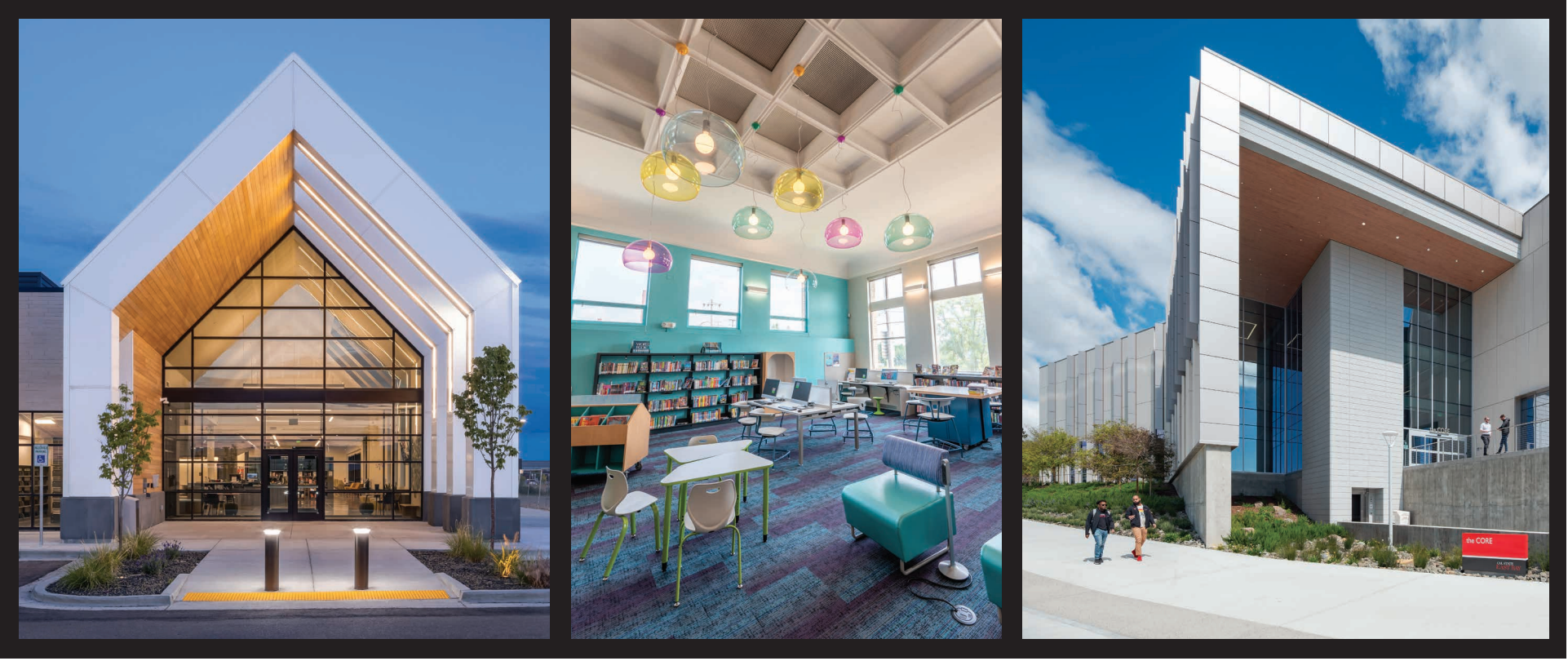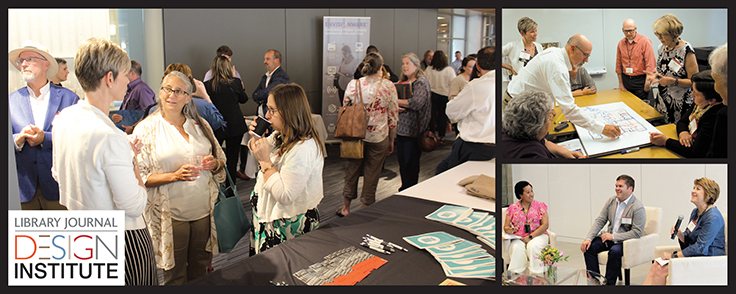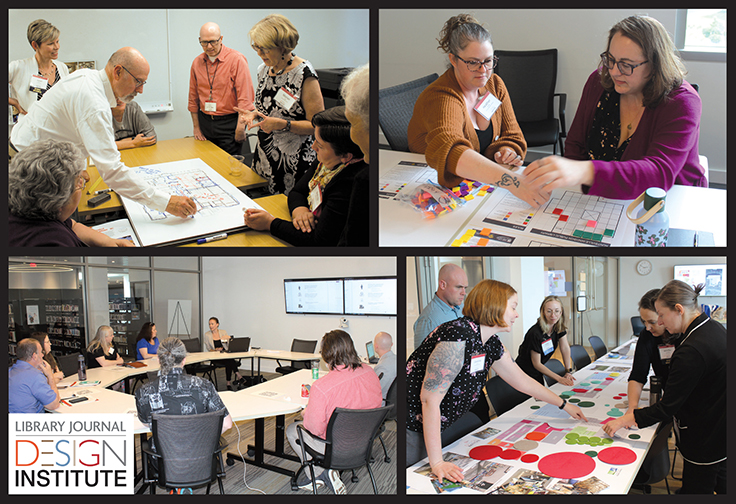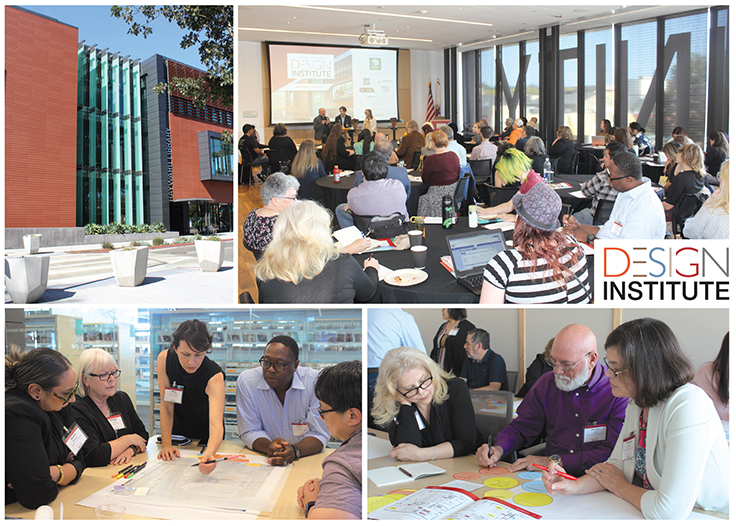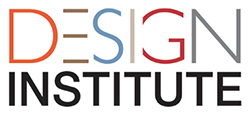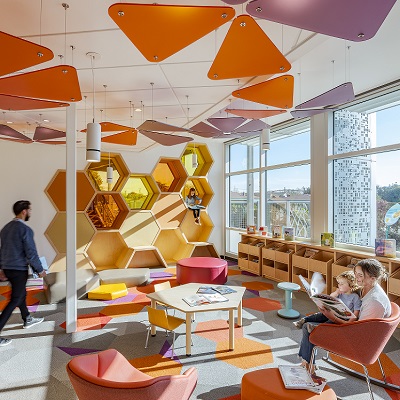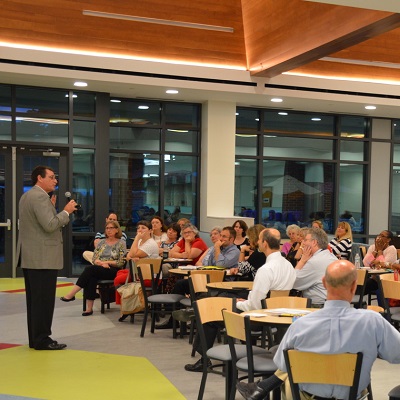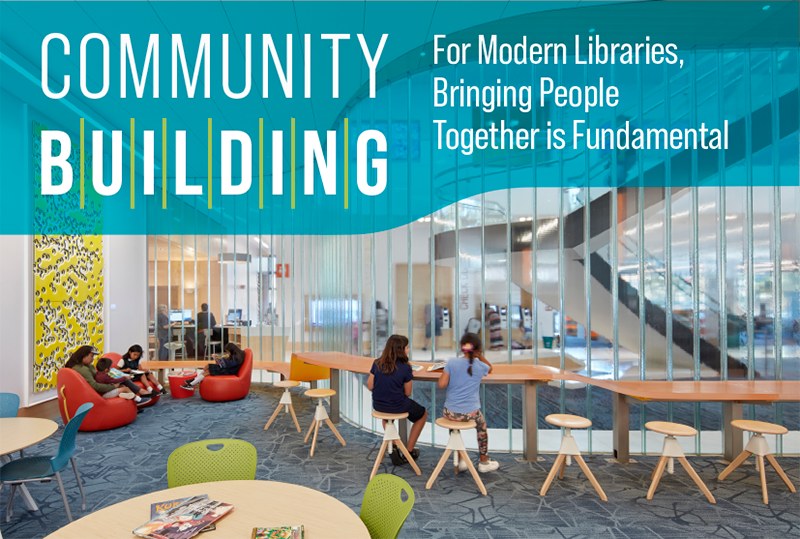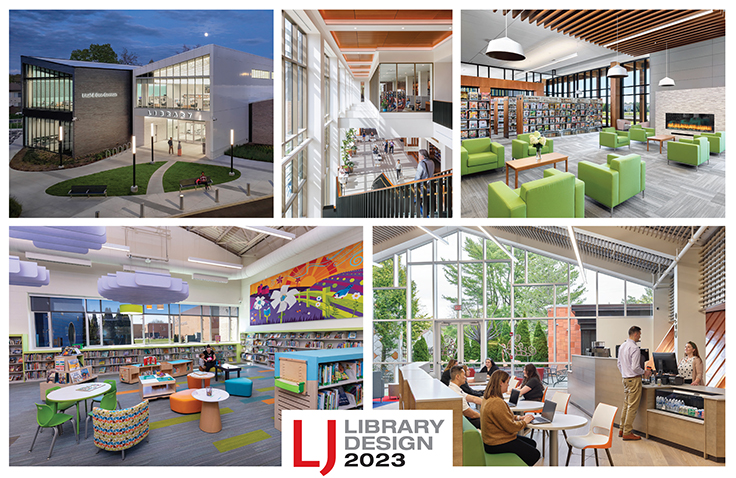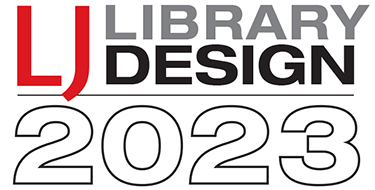Design
ALL DESIGN COVERAGE
Design Institute Hayward looked at ways to design for inclusion, safety, sustainability, and extending a warm invitation to all.
At LJ’s 2023 Design Institute in Hayward, CA, held at the Hayward Public Library on September 28, five libraries in California and New Mexico enlisted architects and attendees to brainstorm on upcoming library design challenges.
While the COVID-19 pandemic has understandably been a key concern over the past few years, architects and librarians haven’t neglected other important factors in the continuing evolution of libraries in their communities.
Diversity, equity, and inclusion. These three words are commonplace today and serve as important reminders that opportunities should be made available to everyone. Public libraries share similar goals; their facilities, learning materials, services, and programs are open and available to all.
Libraries have always been much more than just repositories for books and other materials. They’ve also been centers for community learning and brought people together to improve their lives. This goal has become even more important in the digital era.
Colors that pop, sophisticated meeting spaces, residential design elements, and more in this year’s top library design trends.
A palpable sense of celebration and cultural sensitivity is evident through color, choice of fabric, and the architectural program. These renovations and builds are anything but utilitarian, incorporating thoughtful details like imagery, materiality, and type into their spaces.
Trends in meeting and reading rooms suggest attention to shifts in remote and hybrid work environments. Built-in shelves, long wooden tables with integrated lighting, and classic wooden chairs make a comeback with contemporary twists.
ALREADY A SUBSCRIBER? LOG IN
We are currently offering this content for free. Sign up now to activate your personal profile, where you can save articles for future viewing
